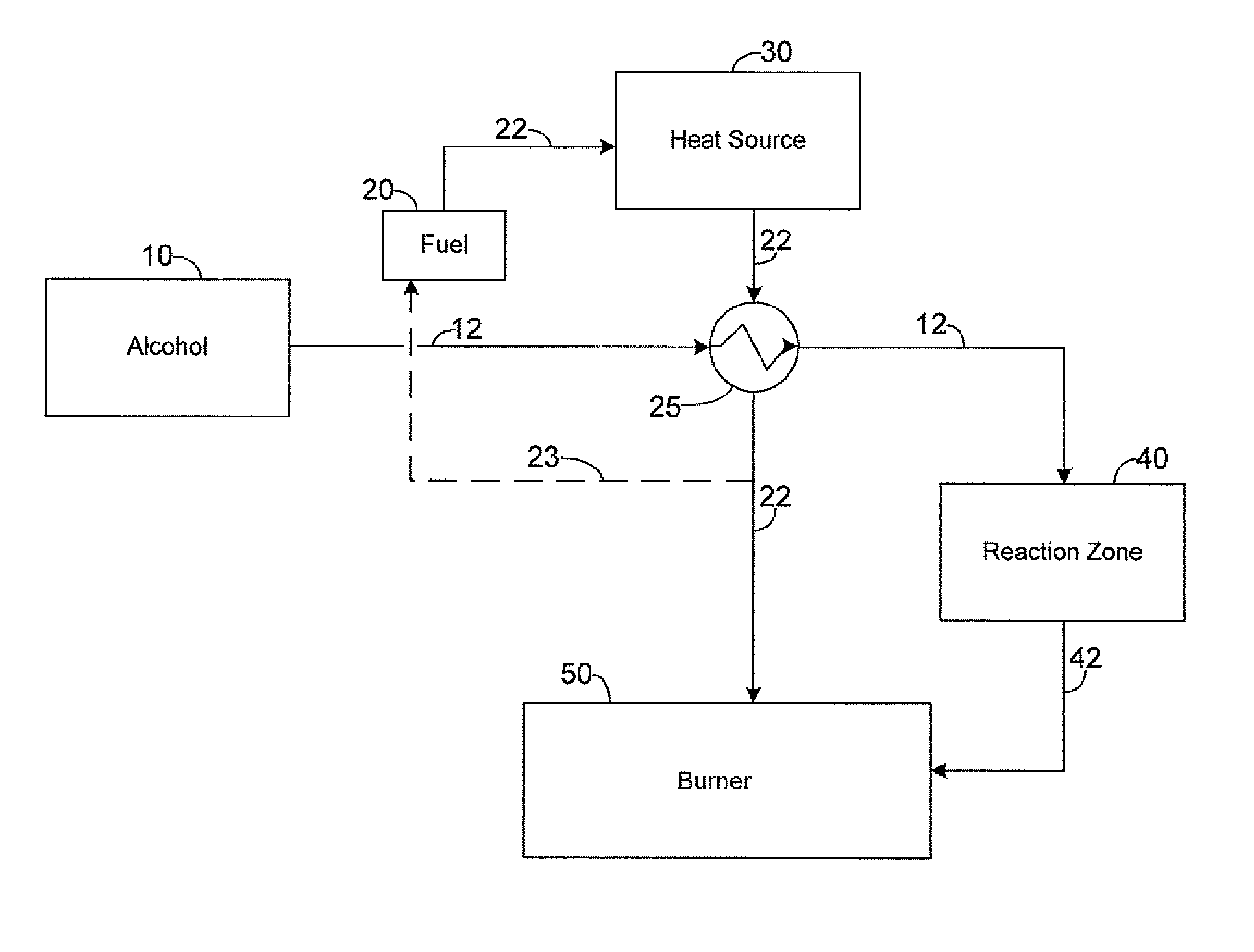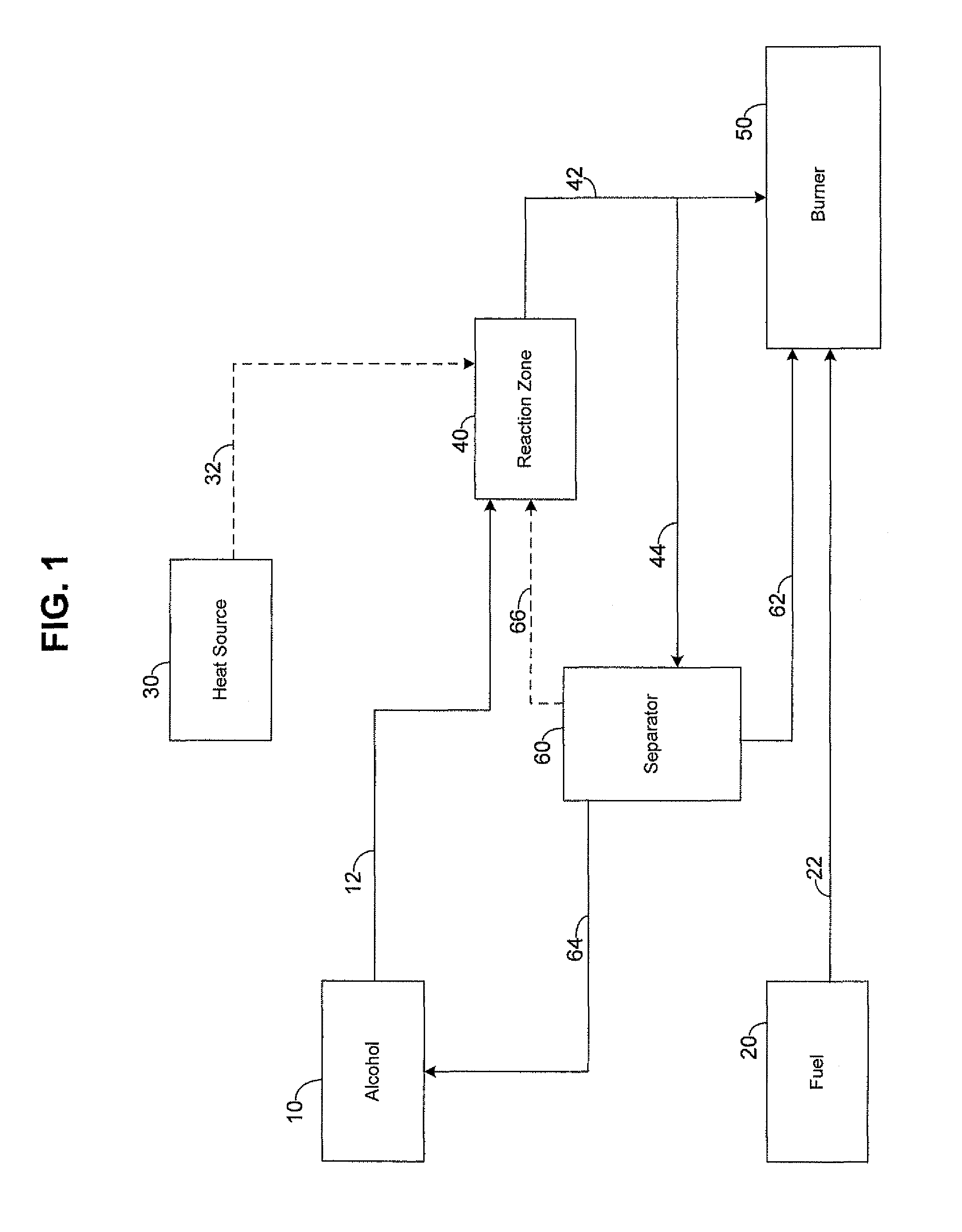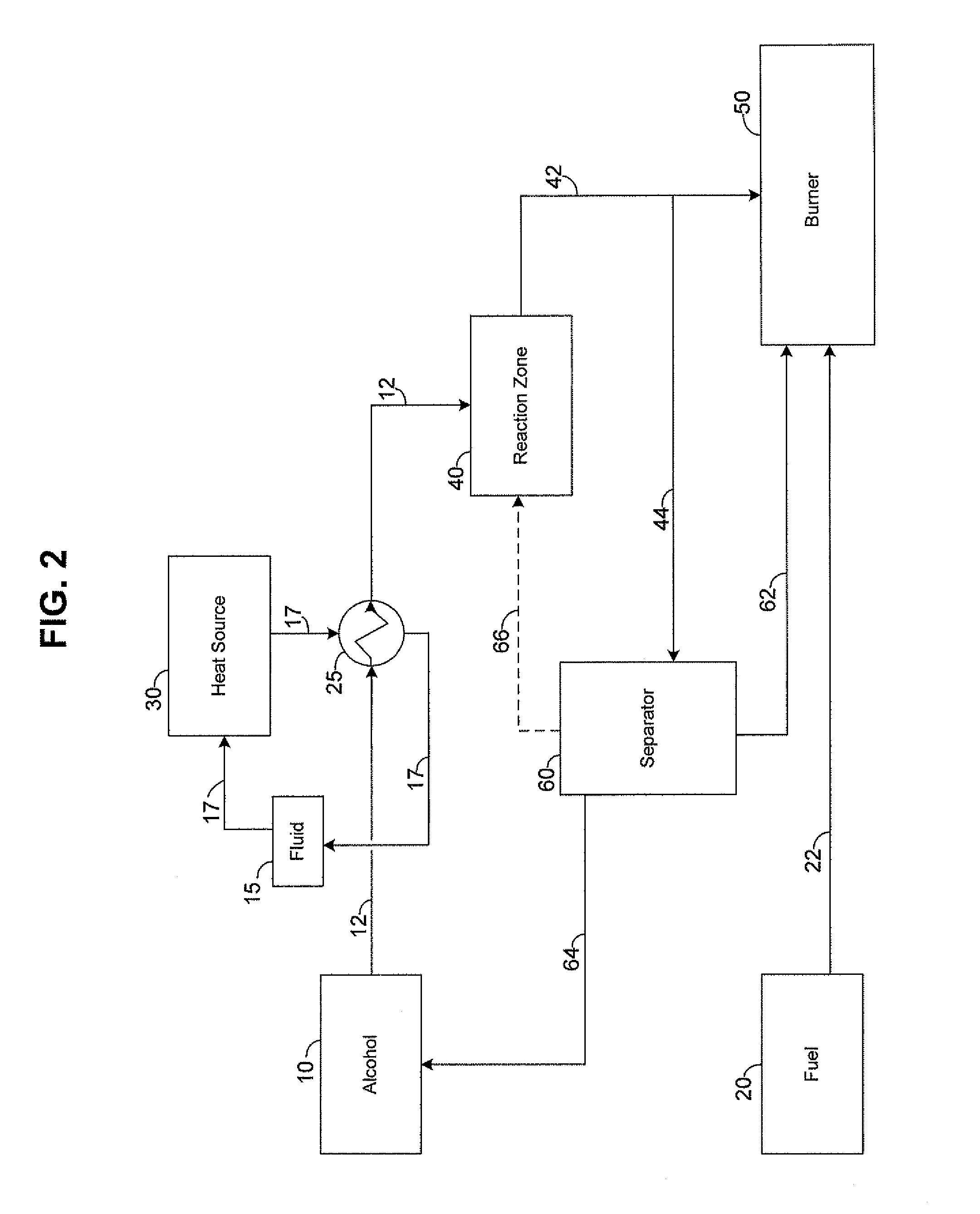Catalytic alcohol dehydrogenation heat sink for mobile application
a heat sink and alcohol technology, applied in the direction of energy-efficient board measures, physical/chemical process catalysts, gas-gas reaction processes, etc., can solve the problems of limited heat capacity of fuel, difficult heat rejection (heat sink), and damage to electronics, so as to promote the dehydrogenation of isopropanol and promote endothermic reaction
- Summary
- Abstract
- Description
- Claims
- Application Information
AI Technical Summary
Benefits of technology
Problems solved by technology
Method used
Image
Examples
Embodiment Construction
[0022]Although the following detailed description contains many specific details for purposes of illustration, one of ordinary skill in the art will appreciate that many variations and alterations to the following details are within the scope and spirit of the invention. Accordingly, any exemplary embodiments of the invention described herein are set forth without any loss of generality to, and without imposing limitations thereon, the present invention.
[0023]Alcohols are generally classified into primary, secondary and tertiary, based upon the number of carbon atoms connected to the carbon atom that bears the hydroxyl group. Namely, the primary alcohols have general formulas RCH2—OH; secondary alcohols are RR′CH—OH; and tertiary alcohols are RR′R″C—OH, where R, R′ and R″ stand for alkyl groups. Ethanol and n-propyl alcohol are primary alcohols, and isopropyl alcohol is a secondary alcohol.
[0024]In a typical dehydrogenation reaction of alcohol, the alcohol combines with heat in the ...
PUM
| Property | Measurement | Unit |
|---|---|---|
| temperature | aaaaa | aaaaa |
| temperature | aaaaa | aaaaa |
| temperature | aaaaa | aaaaa |
Abstract
Description
Claims
Application Information
 Login to View More
Login to View More - R&D
- Intellectual Property
- Life Sciences
- Materials
- Tech Scout
- Unparalleled Data Quality
- Higher Quality Content
- 60% Fewer Hallucinations
Browse by: Latest US Patents, China's latest patents, Technical Efficacy Thesaurus, Application Domain, Technology Topic, Popular Technical Reports.
© 2025 PatSnap. All rights reserved.Legal|Privacy policy|Modern Slavery Act Transparency Statement|Sitemap|About US| Contact US: help@patsnap.com



